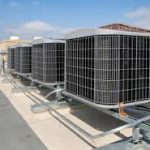A review of some tips from the article, as well as a few more:
- Spend time researching your HVAC contractors. Who installs your unit is far more important than what they install. I’ve repaired Carrier units that were 3-years-old because they were improperly installed, and I’ve seen Day and Night HVAC units that were 22-years-old and running strong. Make sure that they are licensed, bonded and insured.
- If possible, shop around and avoid “factory licensed dealer” type contractors. If they are a licensed dealer of only one brand, realize that you aren’t going to get an unbiased opinion. They have a vested interest in selling their product regardless of whether or not it is the best fit for you, increasing HVAC installation cost when things don’t work out. Pick a company that installs all major brands instead because they have no investment in one particular product other than whether or not it makes you happy and fits your budget.
- Be careful with HVAC change-outs. Change-outs are only about 15-20% of the HVAC installation industry. Decrease HVAC installation cost by investing in new ductwork now if needed. Your ducts wear out too, and make sure that your ducts are in fantastic shape if you do this. Many contractors push this because it’s easy and cheap for them, with good pay-off. Do your research and replace them if you need to in order to avoid doing it later, as well as avoid potential health hazards from using old, broken ductwork.
- Asbestos removal tip. Don’t trust any HVAC installation company that says that they will remove asbestos for you. They will do either one of two things: remove it and do a horrible job because they don’t know how (an illegal act in Virginia, finable by up to $250,000), or they will say they did and never actually do it, which is dangerous to your health. Any HVAC contractor worth their weight will know not to touch it. Call an asbestos abatement company – it should cost around $500-$1,000, and your HVAC installation company will come in right after them and do the installation to decrease cost and inconvenience.
- Stick with a maximum of 16 SEER units. Like I said above, contractors push higher SEER units because they make more money, but these units can be unreliable at this stage of development and can drive up you HVAC installation cost – 21 SEER units run about twice the price of a 14 SEER unit. Likewise, a 16 SEER unit typically costs only about $600-$1,000 more than a 14 SEER, and will usually pay for itself over the lifetime of the unit.
- Tonnage will increase price by about $300-$400 per extra ton of cooling. Size your unit properly for your house and don’t worry about this as far as price is concerned.
- Try to find a company that does commercial HVAC as well. The experience required to do commercial HVAC applications is typically a good way to ensure that the technicians that work on your project know what they are doing – a key to keeping your HVAC installation cost down. It isn’t fool-proof, but keep it in mind as you do your research.
- Be careful of dishonest HVAC contractors. There’s no magical formula to see if an HVAC contractor is scamming you, unfortunately, but remember that they typically do this in one of two ways: first, they are charging grossly low prices (far below everyone else), or second, they aren’t including what everyone else is. In the first situation, they will charge you change fees, other hidden fees, or they stole the equipment and are passing themselves off as legitimate contractors (very common in Virginia these days). In the second situation, they are charging you a very fair price, but aren’t including what the other contractors are (i.e. charging $10,500 for the installation which is fair, but not including the ductwork which is a scam unless there is some other, complex stuff going on there).
https://cmrva.com/services/heating-system-installation/


